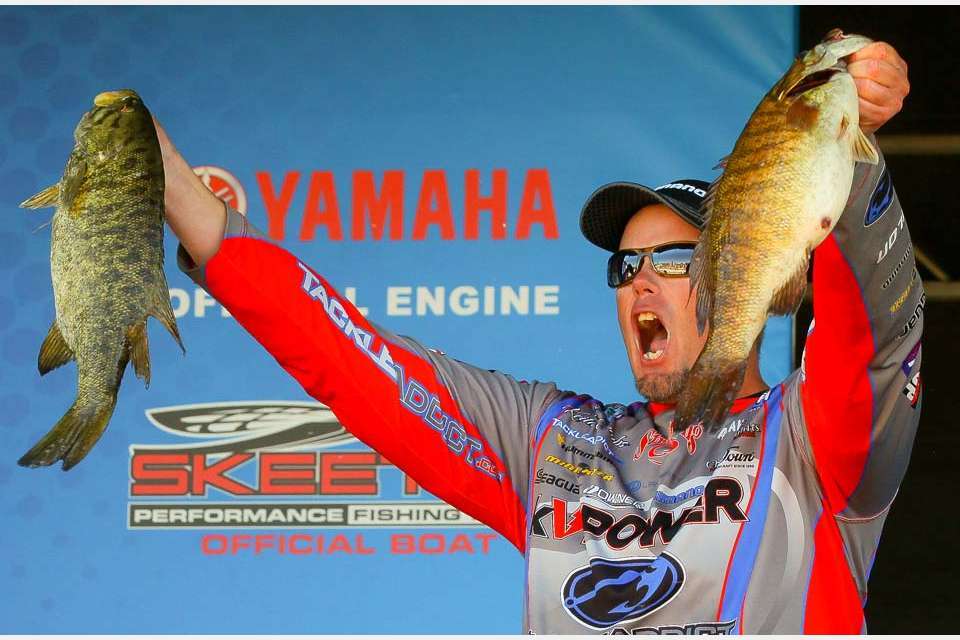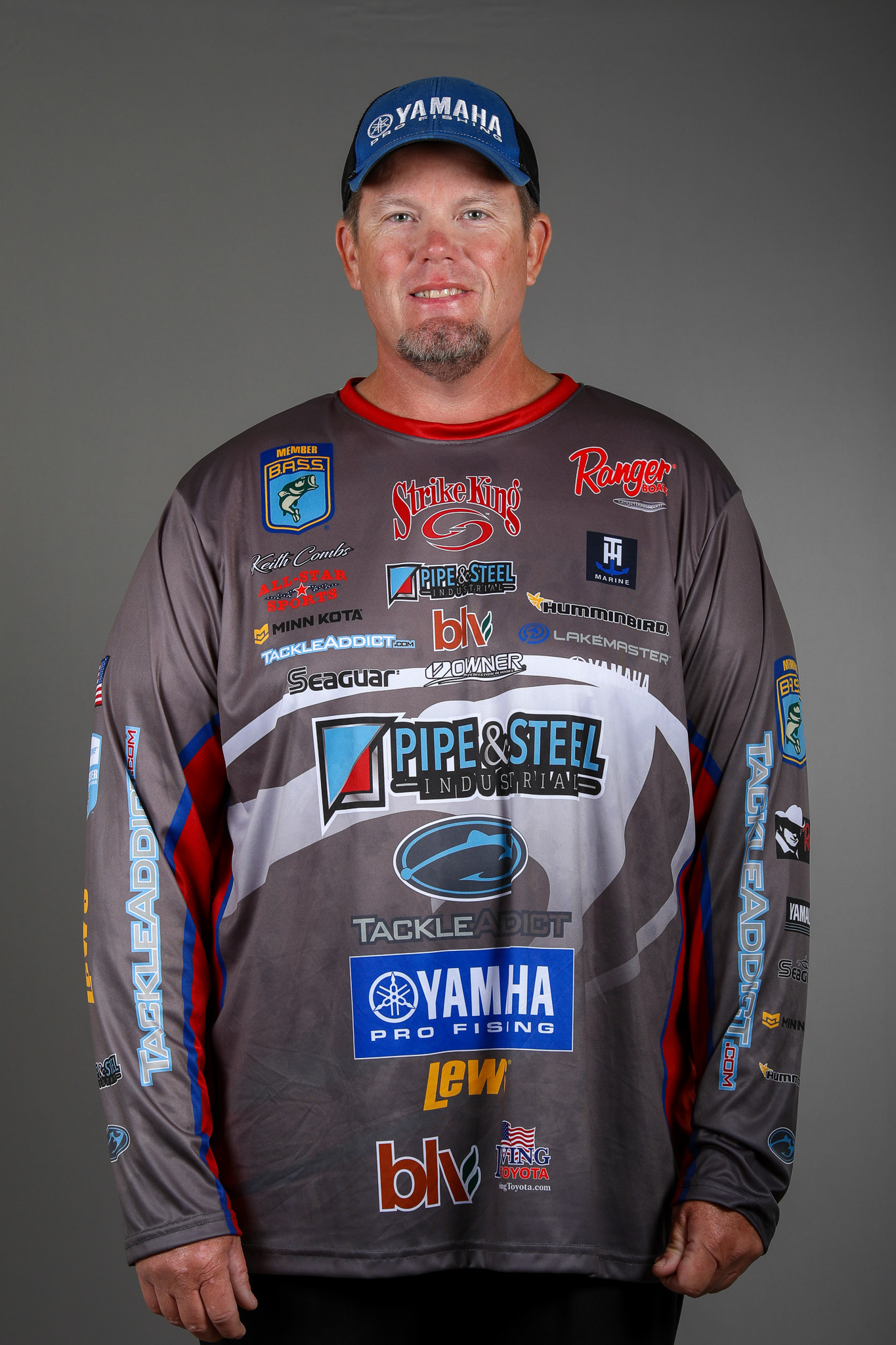
Before I talk about the Toyota Bassmaster Angler of the Year Championship, I want to extend congratulations to Brandon Palaniuk, our new Angler of the Year. I also want to congratulate Dustin Connell, the Rookie of the Year. Not only did both of them have great seasons, but they seem to epitomize how a professional angler should conduct his career. I expect both of them to be formidable competition for a long time.
Now, on to Minnesota….
Heading into the AOY Championship at Mille Lacs I had won five major tournaments in my career, and they’d all come while fishing for largemouth in Texas. I had threatened to win elsewhere, including in smallmouth country, but it always nagged at me that I hadn’t been able to break through outside of that zone. I spent a lot of time analyzing what it would take to get past that barrier. Now, thanks to 72 pounds of smallmouth, I can say that I’ve accomplished that goal, and I did it against the best of the best.
The victory at Mille Lacs was particularly gratifying because it happened on a lake where I had stumbled 12 months earlier. I’d entered the 2016 tournament with a mathematical chance to catch Gerald Swindle in the AOY race, but I was slow getting out of the gates on Day 1 and could never really recover. My daily weight went up a couple of pounds the next day, and again on Day 3, but I ended up in 30th place out of 50. Even if I’d won the event, I wouldn’t have caught Gerald, but the rough start left a bad taste in my mouth.
Fortunately, during last year’s event I didn’t shut down my brain after my chance to win evaporated. I kept trying to dial in the bite, and I learned from Takahiro Omori how effective a jig can be up there. I filed that information away and came back fully intending to commit to a jig. I also revisited some places on the east side of the lake that I thought had potential. I started practice on a long, tapering point where I’d caught some fish last time, but this time I went out deeper and caught two fish of more than 5 pounds immediately. That gave me confidence in the spot, in deep water and that they’d eat the jig early.
I truly believe that my confidence in those early morning spots made a huge difference, because no one ended up finding the same schools that I did. Historically, that’s virtually unheard of on the Elite Series. If you find a mega school, usually several other pros do too. One year at Kentucky Lake I found three separate schools that all had the potential winning fish, but when I got going in the morning there were already six or seven boats on each of them. This time that wasn’t the case. I hit my first spot on the first day of the tournament and had 24 pounds in the livewell in five casts. I figured that I’d have to guard it for the rest of the day, but when no one showed up after a while I slid over to another money spot and culled twice with 5-pounders. No one showed up there, either.
On Day 2 it went pretty much the same way. Oddly enough, those fish wouldn’t eat the drop shot, but when I’d see one on the graph I’d back off of it and fire the jig to where the fish was sitting and they’d bite almost every time. On Day 3 the lake was much rougher, but with my Minn Kota’s Spot Lock feature I had no trouble staying on the juice. Even though I missed a bunch of fish because I couldn’t feel the bites, I had the quantity and quality to close it out.
Reflecting on this incredible week, I see that there are reasons why no one else discovered my key areas. We launched from the west side of the lake, and I fished mostly on the east side, and the spots were best in the morning when it was typically pretty rough over there. Most anglers would start close to the ramp and try to find something there in the low light conditions before heading east later in the day. By that point, the best bite would be over, and I was typically back on the west side looking for more schools. I caught my fish quickly, and I left quickly. I never saw any other tournament boats or spectators nearby when I was doing the majority of my damage. It was just me and my Marshal.
While this victory was different than my others in terms of where it took place, in some respects it’s very similar. I’ve won the TTBC three times. Like the Bassmaster Classic, that’s a winner-take-all event, an “all-in” thing where you’re not fishing for points and second place is essentially meaningless. This was the same deal – there was no way for me to earn the AOY title, and I was safely inside the Classic cut, so I had nothing to lose and everything to gain. It’s a good reminder about the need to gamble at times when a win is within reach. Obviously, you can’t do that in every tournament or you’d run the risk of missing the Classic, but when those opportunities present themselves you have to be aware of what’s going on and ready to ride out the ups and downs.
When I won the Elite Series event at Falcon in 2013, I was only getting five to seven bites a day, but given my long history on that venue I knew that they were the right bites. Similarly, at Mille Lacs I committed to the jig and even on my best day I only caught 11 fish. Other anglers may have caught more fish, but in the end my strategy paid off with a big blue trophy. I know that I recently wrote that you should never trust smallmouth, but with a little attitude adjustment I’m starting to like them more and more.

